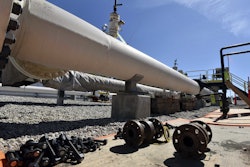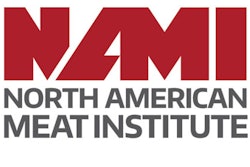Safety is good for business on many levels. A well organized, clean and safe production facility protects the investment an organization makes in its people. It improves morale, instills a sense of company pride and supports quality products and services.
Safety also reduces the indirect costs of incidents, beginning with lost time due to an employee injury. Indirect costs are associated with the time required to conduct an investigation, implement corrective actions and train employees to do the work performed by the injured employee — all time that results in additional and unbudgeted expenses.
A company that maintains an active safety program also positions itself to be proactive or forward-thinking with regard to eliminating safety hazards. Management is not looking back, reacting to incidents and accidents, but looking ahead implementing safety management systems and tracking leading indicators to create a safe working environment while at the same time promoting a favorable image and reputation that attracts and retains good talent.
Safety Requires Commitment
The success of any safety program requires commitment throughout the organization. Management sets the direction, tone and attitude toward the program. By carefully defining and explaining the benefits of a culture that promotes safety, they engage employees at every level in safe working practices and a program that yields success.
The Occupational Safety and Health Administration (OSHA) can also play a key role in a creating and/or enhancing a robust safety program. OSHA is not just about creating and enforcing regulations. The organization offers individual safety training courses through its OSHA Education Center. Employees who enroll in OSHA’s 10-, 30- or 40-hour online safety training courses have 24-hour access to training, allowing them to learn at their own pace from any web-enabled device. Upon completion, students receive an OSHA Outreach Training Program student completion card.
OSHA Offers Cooperative Programs
OSHA also offers a number of cooperative programs, which encourage businesses to work with the agency to help prevent fatalities, injuries and illnesses in the workplace. The Alliance Program, for example, helps organizations develop compliance assistance tools and resources, share information with workers and employers and educate workers and employers about their rights and responsibilities. The OSHA Strategic Partnership Program (OSPP) encourages partnerships that establish specific goals, strategies, and performance measures to improve worker safety and health.
Another program, the OSHA Challenge Program, provides participating employers and workers an avenue to work with their designated Challenge Administrators to develop and/ or improve their safety and health management program through mentoring, training and progress. Employers can also choose to participate in the Safety and Health Achievement Recognition Program (SHARP), which recognizes small business employers who have used OSHA's On-site Consultation Program services and operate an exemplary injury and illness prevention program. Acceptance of a worksite into SHARP from OSHA is an achievement of status that singles out a company among its business peers as a model for worksite safety and health.
VPP Recognizes Elite Programs
An even more elite OSHA program, the Voluntary Protection Program (VPP), recognizes employers and workers in private industry and federal agencies who have implemented effective safety and health management systems and maintain injury and illness rates below national Bureau of Labor Statistics averages for their respective industries. In VPP, management, labor and OSHA work cooperatively and proactively to prevent fatalities, injuries and illnesses through a system focused on hazard prevention and control, worksite analysis, training and management commitment and worker involvement. To participate, employers must submit an application to OSHA and undergo a rigorous onsite evaluation by a team of safety and health professionals.
As its name implies, VPP is a voluntary program that assesses a company’s safety program compared to industry norms and best practices. Companies may qualify for one of three programs. The Star Program is designed for exemplary worksites with comprehensive, successful safety and health management systems. Companies in this program have achieved injury and illness rates at or below the national average of their respective industries.
The Merit program is an effective stepping stone to Star. Merit sites have good safety and health management systems, but these systems need some improvement to be judged excellent. The third program, Star Demonstration, is designed for worksites with Star quality safety and health protection to test alternatives to current Star eligibility and performance requirements.
JLG Earns Star status
In 2016, JLG Industries, Inc. announced its Shippensburg and Bedford, PA, facilities received Star site certification, making JLG the first company in the access industry to achieve this recognition from OSHA. JLG began the journey toward VPP certification five years ago. At that time, parent company Oshkosh Corporation introduced a three-level safety management system (SMS) that looked at basic safety practices, as well as processes and employee engagement in safety. Working through this program positioned JLG to invite OSHA into its facilities to audit the company’s processes and measure team engagement in safety and safe-working practices.
In its report, OSHA cited a number of areas of excellence at the JLG facilities, including: employee participation in safety, specifically as it relates to safety-committed projects and the writing of job safety analyses; new employee training programs that teach job skills and ergonomic practices prior to introduction to the production environment; and response time to fix action items.
VPP participants are re-evaluated every three to five years to remain in the programs. In addition, they are exempt from OSHA-programmed inspections while they maintain their VPP status.
VPP Participants Value Safety
Participating in programs like VPP sends the message that a company values safety and provides its employees a safe, clean environment that often translates to quality products and competitive pricing. Participation also fosters networking and sharing ideas and processes with other VPP companies that demonstrate excellence in occupational safety and health, encouraging continuous improvement in the process.
VPP participant sites set themselves apart from other companies by going above and beyond OSHA compliance to set new standards for industry best practices, implementing new and innovative solutions to reduce hazards in their facilities. The measured focus on employee engagement and management involvement ensures that the safety management system in these facilities is a continuous improvement model that drives a cooperative effort to make sure safety remains an overriding priority.
At the end of the day, a solid, successful safety program depends on support and engagement at every level within an organization. A variety of training resources and tools available through OSHA can help reinforce individual safe-working practices to enhance existing programs with ongoing guidance and assistance.
Adam Croskey is director of safety for JLG Global Manufacturing, JLG Industries, Inc.






















